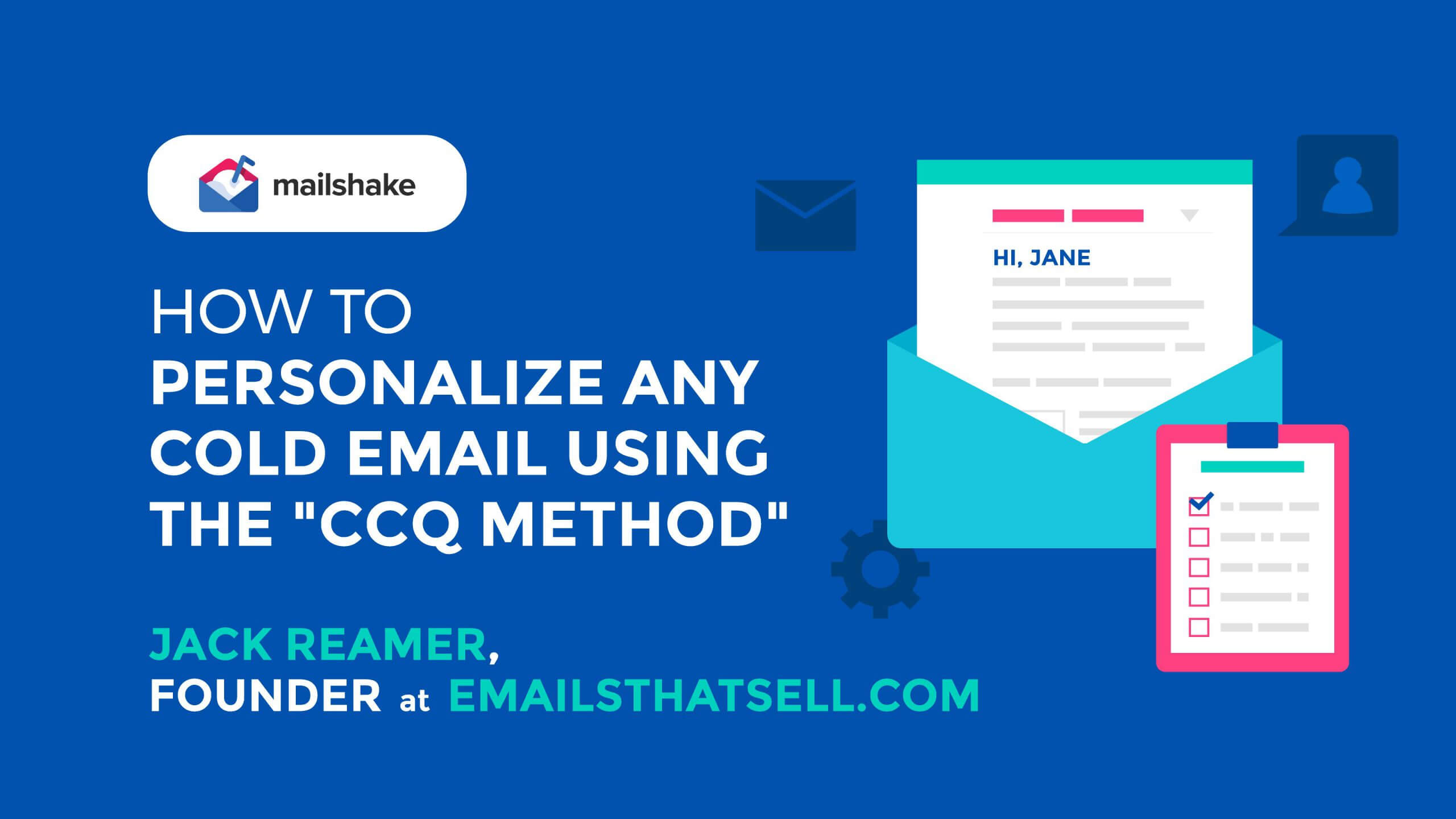How to Use Cold Emailing to Build Your Personal Brand

Contents
Cold email is enough to make many of us break out in a cold sweat.
What could be more daunting than having to not only send an email to someone who doesn’t know you, but also convince them to open, read, click, and convert – reaching out to a complete stranger with what amounts to asking them for a favor?
That’s cold email in a nutshell.
In our ultra-personalized, social-media-connected world, cold email is about as appealing as cold calling or selling door-to-door. And that goes for the sender and recipient.
And yet, it continues to work. Email marketing – including cold email marketing – remains not only relevant but leads the digital channel pack. It’s effective, robust, and compelling. Marketers use it, consumers respond to it.
- We spend an average of 5.4 hours each weekday opening, reading, and responding to email. We check it while in bed, while walking, during our commute, while talking with someone, in the bathroom, while working out, and more.
- 61% of Adobe survey respondents listed email as their preferred channel for contact with brands and businesses. That’s over 3x more popular than direct mail in the #2 spot.

- 40% want those emails to be less promotional and more informational, and 27% want better-personalized content. Can you deliver? (Hint: yes, you can).
- Email beat both Facebook and Twitter as first online check of the day, used daily, customer acquisition, open/click/engagement rate, and a slew of other metrics.
- Email reaches an average of 79% of those on your list.
- Email marketing has an ROI of $38 for every $1 spent.
Do what you can to warm it up – and you can always do something – and cold email becomes a key tactic for any business.
Personalize. Inform. Be mobile-friendly. Don’t overdo it (too much is deadly…allow for recipients to determine their preferred frequency).

We know it works, and we know what consumers want and don’t want in them. That’s invaluable information.
But what can we use it for?
You’ve probably sent or at least received a few cold emails aiming to generate new leads. It’s a great – if not the best – channel for it. But is that all?
I’m here to tell you: no, it’s not. Cold emailing is a very capable channel for building your personal brand, too.
How? Let’s take a closer look.
“All of us need to understand the importance of branding. We are CEOs of our own companies: Me Inc. To be in business today, our most important job is to be head marketer for the brand called You.” ~Tom Peters
Personal Brand
Your personal brand is everything. It’s your reputation, how people see you, your value. It’s you, your business, your products…all rolled into one.
Richard Branson has a personal brand. So do Tim Ferriss, Martha Stewart, Gary Vaynerchuk, and Ann Handley.
Do you? Nowadays, if you’re looking for a good job in marketing or tech, a personal brand is almost a must. Business is as much about relationship and reputation these days as it is about product and price. Consumers want a connection with the individuals and companies they do business with, and they prefer those with a personal brand that matches their own – or how they’d like to be.
According to the Nielsen Consumer Survey, only one-third of consumers trust messaging from a company, but 90% trust it from someone they know. Building your personal brand moves you from untrustworthy company or business to “someone they know.”
Ask yourself: What’s my passion? What do I want to be known for? What impression do I want to make, and with whom?
Personal branding is about connecting and engaging. It is not about selling.
To do that, you need to be an expert. You need to understand your industry inside and out, and keep growing and updating your skill set and knowledge base at every opportunity. No matter your business, industry, or niche, you’ll want to cultivate a reputation as an insider with info and expertise second to none.
Get social on the big networks: Facebook, Twitter, Pinterest, Instagram, and LinkedIn – maybe even Snapchat. Depending on your product line and ideal customer, some will be better than others, but you need to be active on social media in 2017. And you should have a website with a domain that matches your name, or the personal brand you’re pursuing.
Be open and approachable and accessible (social media, live streaming, quick responses). If appropriate or in keeping with your brand, consider a defining characteristic or trait (Bill Nye and his bow ties, Richard Branson and adventure, Steve Jobs and turtleneck sweaters, Ferriss and using himself as a guinea pig, and so on).
And use cold email to nurture it all.
“While traffic is an introduction, engagement builds relationships. An email list and social media audience full of loyal followers and excited fans are important when marketing yourself and building community.” ~Emmelie De La Cruz
The Cold Email for Building a Brand Roadmap
A few reminders about cold email in general:
- Include your contact details – email, social media profiles, telephone number, physical address, and/or URL to instantly give yourself some credibility.
- Use your name in the from: field and message. Use an email address with your name rather than something like info@ or contact@.
- Get to the point, and make sure that “point” includes one very specific call-to-action or request.
- Be concise. Reducing a cold email from 500 to 100 words increased the reply rate by 300% in one study.
- Personalize as much as possible…and in the age of social media and search engines, there’s always something you can find out about your target(s). Mailshake can help with our Lead Catcher and personalization tools.
- It’s exploratory, not aggressive. You’re not trying to close the deal.
Ignore these points, and you’ll likely tumble into the no-man’s land we call the spam folder.
Reach Your Target Audience
One reason email is so perfect for a personal brand building is its reach. Virtually everyone is using it. There are somewhere in the vicinity of 3.7 billion email users worldwide, and we send nearly 269 billion messages per day. That’s huge potential reach and a big crowd.

The same can’t be said for Facebook (2 billion MAUs), LinkedIn (500 million users), or Twitter (328 million users).
What’s more, beyond just better numbers, email has better reach, too. Your email messages reach 79% of the people you send them to, compared to only 1-6% for Facebook (depending on your numbers), and as low as 2% for Twitter.
So if you’ve got 1000 names among your email list, Facebook fans, and Twitter followers, and sent them all a message, you’d reach:
- 790 email recipients (this is not to be confused with your open rate, which averages about 34.1% across all industries)
- 60 Facebook fans at the highest rate of 6%
- 20 Twitter followers
There’s a clear winner in that contest.
Want to reach and get read by more people? Use email. Try a tool like Voila Norbert to make finding anyone’s address a snap. Build your email list. Then, start building that brand.
Provide Something That Helps Them
The introduction in your first email should be short because no one really cares all that much about you (at least not at this stage). Instead, get to how you can help them as fast as possible.
Give them a free tip that has to do with their industry or business. Recommend a relevant article or link or tool that can solve a pain point for them. Offer a free template or cheat sheet. Whatever it is, make it useful, make it high quality, and don’t ask for anything in return. Nothing.
Engagement is the foundation of a strong relationship. So engage.
An unsolicited offer to help or make their lives easier is infinitely better than an unsolicited ask to buy. They’ll respect and appreciate you for it. You want them to feel like you’re in the business of helping others, and nothing more.
Share Your Expertise and Best Stuff
For free. Personal branding is all about your reputation and what people are saying about you and feeling toward you.
Neil Patel, as one example, gives away tens of thousands of dollars’ worth of content and resources every year. Why? Because it gets his name out there. It grows positive feelings. It’s made him an expert in his field. And he’s made that money back and much, much more as a result.
He’s had clients grow their business by 290% using the same tactic. You can get there, too. There’s no better way to grow your reputation, increase awareness, demonstrate that you’re trustworthy, and ultimately, make you an authority and instantly recognizable in your field.
That’s the whole goal of personal branding.
Vary Your Email Content
In theory, it’s a very simple plan. But it’s also very easy to fall into the trap of just sending out the same quick note with the same “stuff.” Remember, variety is the spice of life. 2-3 emails in the beginning that all link to a blog post – even if the posts themselves are different – will quickly get tired and boring. You might even get slapped with a “blog post guy” label.
You want to be an expert. An authority. Not the “blog guy” or “infographic gal.” Mix it up: blog posts, interviews, tutorials, opinions, videos, live streaming, Q&A, white papers, case studies, podcasts, infographics, quizzes, and more.
Become their go-to guy or gal for all things related to your field and niche. A recent Demand Gen report found that 47% of buyers viewed 3-5 pieces of content before engaging with a sales representative, and 51% of B2B buyers use content to research during a purchase decision.
Build your reputation by creating and giving away top-notch content…and they’ll come to you when they’re ready or need to buy.
Share Breaking News
Share news about you, your business, your industry, and your products. Not only is it another technique for engagement and reputation building, but email is ideal for this.
Email is received and opened by far more people than a post on social media is. Facebook, Twitter, and Instagram organic reach has been shrinking for years. If you’ve got important, exciting, or timely news, share it via email. Recipients will quickly identify you as a great source and begin to rely on your emails to keep them well informed.
A tweet has a half-life of about 30 minutes. Anyone not logged on and actively skimming their feed – even if they follow you – is going to miss it. A Facebook post gets 75% of its engagement in five hours or less, 75% of its impressions in 150 minutes, and 75% of its reach in 1 hour 50 minutes. Better, but still not fantastic.
If your email reaches their inbox, though, it’s still there waiting for them whenever they next log in.
Email. Get seen. Simple.

There are other things you could do. You might target an influencer and cultivate a relationship, or start a community, or rock the proverbial boat. Whatever you do, make it authentic.
Personal brand is about your exposure and the opinions surrounding it. Email allows you to control that, spread awareness, and engage like no other platform. Starting from the “despised” cold email, you can build up and out from nothing.
“Personal branding is about managing your name — even if you don’t own a business — in a world of misinformation, disinformation, and semi-permanent Google records.” ~Tim Ferriss
Cold emailing is not for the faint of heart. You can do a lot of damage if you half-ass it. Once you end up in the spam folder, it’s hard to break out of that digital prison.
Study up on it, learn all you can about it, look to others for tips and inspiration, and avoid credibility and legitimacy-breaking words, phrases, and practices. Do that, and you can successfully use cold email for lead generation, engagement, promotion…
…and building your brand. That’s worth every penny you can spend on it. A strong personal brand in the 21st century is synonymous with a strong and prosperous business.
The only time cold emailing should make you break out in a cold sweat is if you opt to not do it.
Image: Pixabay





